- Introduction
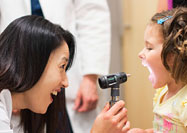
- Part of a Team
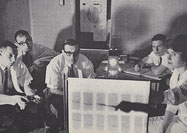
- Practitioners from Many Backgrounds
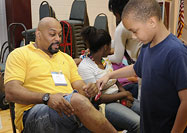
- Collaboration with New Partners
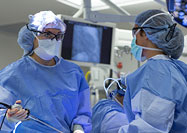
- Respond to Community Needs

- Care Around the World
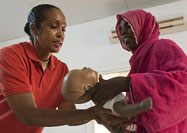
EXPLORE
Select one of the topics from above.
Introduction
Physician Assistants, commonly called PAs, practice medicine as part of a team. PAs are nationally certified professionals who evaluate, diagnose, treat, and care for patients with physician supervision. They work in all specialties and settings, and collaborate with other medical professionals and patients, in various communities.
Collaboration has been the foundation of the profession since the first three PAs graduated from Duke University’s program in 1967. Throughout their history, PAs’ goals have always been to provide patients with the best care possible and improve lives by addressing health care shortages. PAs continue to fill gaps in health care systems by extending people’s access to quality service.
Continue to Introduction
Part of a Team
PAs are educated and trained to collaborate with other health professionals. During their coursework and clinical training, PAs learn from and work with physicians, other PAs, nurses, and additional health care professionals in a variety of settings.
American physician Eugene Stead created the profession’s partner-based foundation. He modeled it after the collaborative relationship between Dr. Amos Johnson and his assistant, Buddy Treadwell, who had worked together in rural North Carolina since the 1940s. Dr. Stead opened the first academic PA program at Duke University in 1965, which educated students to care for patients with physician oversight. The program provided two years of broad medical training in anatomy, physiology, laboratory science, medicine, and surgery.
Continue to Part of a Team
Practitioners from Many Backgrounds
Many of the first PA students had served as U.S. Navy Hospital corpsmen in the Vietnam War, where they gained extensive practical experience in medicine and surgery before entering PA programs. As the profession grew, more programs such as Med-ical Ex-tenders (MEDEX) opened, and civilians, women, college graduates, and other under-represented groups increasingly entered the field.
Today, the profession encourages people from various backgrounds to become PAs. Programs like Project Access provide potential PA students from underrepresented groups with mentors who support their interest in the occupation. PA programs teach students how to identify their own biases and how to interact with colleagues and patients of different backgrounds, throughout the United States and beyond.
Continue to Practitioners from Many Backgrounds
Collaboration with New Partners
Originally, PAs assisted physicians primarily in general practices. As the profession grew in the 1970s and 1980s, PAs began working with new groups in various locations, including the elderly in nursing homes, patients with HIV and AIDS in hospitals and clinics, and incarcerated people. Today, PAs also practice in emergency rooms, the military, and even at the White House.
By working in many different settings and specialties, PAs serve a wide variety of patients. PAs specialize in areas including internal medicine, surgery, and obstetrics and gynecology, to name a few. They are also able to change fields throughout their careers due to their generalist educations, clinical training, and certifications.
Continue to Collaboration with New Partners
Respond to Community Needs
Many PAs, and the organizations for which they work, promote patients’ general well-being. They try to meet people’s basic human needs by providing food, shelter, education, and emotional support. Some PAs work for systematic change in health through activism and political reforms. Karen Bass was the first PA elected to Congress, serving from 2011 to 2022. As a congresswoman, Bass worked to improve health policy through her service on related committees and caucuses.
By listening and responding to people’s broader needs, PAs promote an approach to health care that values and respects patients as individuals. This respect fosters trust among individuals, families, and communities.
Continue to Respond to Community Needs
Care Around the World
Although the profession began as uniquely American, PAs’ proven success and their work abroad have influenced the global community. American PAs support efforts to expand the field internationally by teaching important medical skills and by aiding programs abroad. Other countries, such as Canada, the United Kingdom, the Netherlands, Ghana, and India have begun PA programs and are educating the next generation of health professionals.
PAs work and volunteer abroad to serve people globally. They provide essential medical aid and training to countries in times of need, such as during epidemics and natural disasters like earthquakes and hurricanes. Every day, through collaboration and care, PAs make a difference in people’s lives.
Continue to Care Around the World

